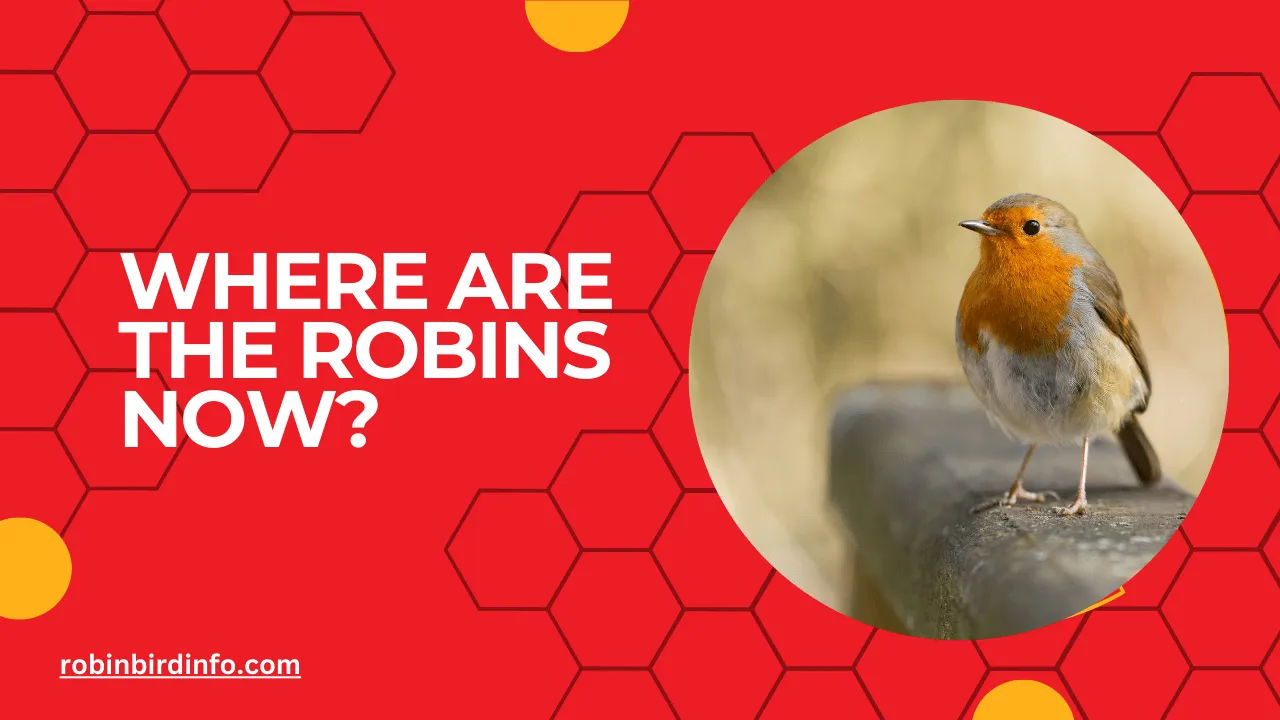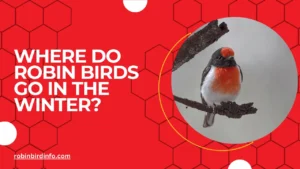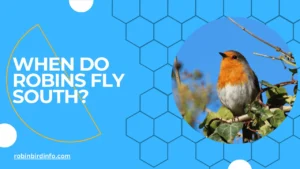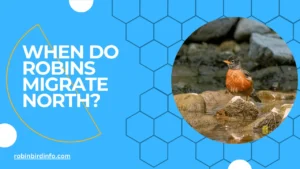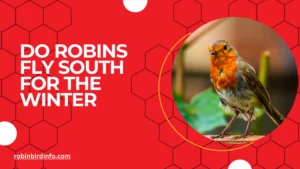Remember those cheerful chirps that used to greet you every morning?
The vibrant red breasts flitting across your lawn, searching for worms? If you live in the northern hemisphere and your backyard feels eerily silent lately, you’re not alone. Many of us have noticed the absence of our feathered friends – the Robins.
But where did they go? Don’t worry, they haven’t vanished into thin air! These seemingly ordinary birds are actually embarking on a remarkable journey – a grand migration south for the winter.
Understanding where Robins go and why they travel such vast distances is more than just a fun fact. It’s a window into the fascinating world of bird migration, a complex and synchronized ballet driven by survival instincts.
By learning about their incredible journey, we gain a deeper appreciation for these backyard companions and the delicate balance of nature they play a part in. So, grab a cup of coffee and get ready to unravel the mystery of the missing Robins!
Contents
Robin Migration Patterns
Timing of Migration: Robin migration typically begins in late summer and early fall. The exact timing can vary depending on factors like weather conditions and food availability. As temperatures drop and daylight hours shorten, Robins start their journey south.
Migration Routes: Robins follow specific migration routes, often traveling in large flocks. They may take different routes depending on their specific location and destination. Some Robins may migrate short distances, while others may travel thousands of miles.
Factors Influencing Migration: Several factors influence Robin migration, including temperature, food availability, and day length. As temperatures drop and food becomes scarce in their breeding grounds, Robins are triggered to migrate to warmer regions with abundant food.
Section 2: Wintering Grounds
During the winter, Robins seek out warmer climates with abundant food sources. Preferred wintering habitats include forests, woodlands, and urban areas with fruit-bearing trees and shrubs.
Food availability is crucial for Robin survival during the winter. They rely on fruits, berries, and insects to sustain themselves. Areas with abundant winter berries, such as holly and cotoneaster, are particularly attractive to Robins.
Climate and weather play a significant role in determining suitable wintering grounds. Robins prefer mild climates with minimal snowfall. Harsh winter conditions can limit their food supply and increase their energy expenditure.
Section 3: Challenges Faced During Migration
Weather-related challenges such as storms, fog, and extreme temperatures can pose significant risks to migrating Robins. Strong winds and heavy rain can disorient birds and force them to ground, making them vulnerable to predators.
Predation is another major challenge faced by migrating Robins. Birds of prey, such as hawks and owls, are common predators that prey on migrating birds.
Habitat loss and fragmentation can also impact Robin migration. The loss of stopover sites and wintering grounds can force Robins to travel longer distances and face increased risks.
Section 4: The Role of Climate Change
Climate change is altering Robin migration patterns and wintering behavior. Warmer temperatures can lead to earlier spring arrival and delayed fall migration. This can disrupt the timing of breeding and food availability, potentially impacting reproductive success.
Climate change can also affect the distribution and abundance of food sources for wintering Robins. Changes in plant phenology and insect emergence can impact the availability of food, especially during critical periods.
Understanding the impact of climate change on Robin populations is crucial for developing effective conservation strategies. By monitoring migration patterns and identifying potential threats, scientists and conservationists can work to protect these beloved birds.
Section 5: Citizen Science and Tracking Robin Migration
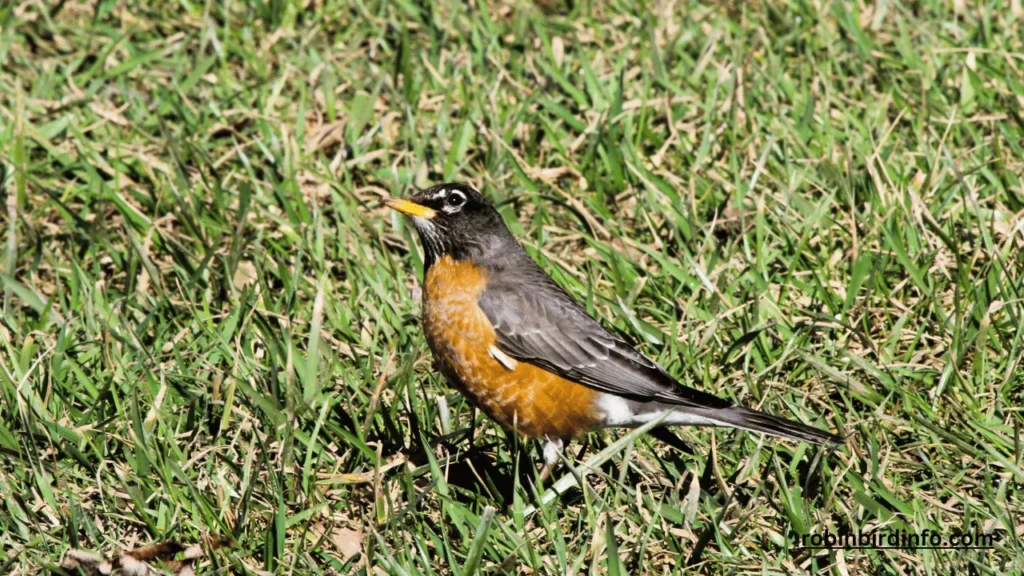
Citizen science plays a vital role in tracking Robin migration and collecting valuable data on their behavior. By participating in birdwatching and reporting sightings, individuals can contribute to scientific research.
Technology and tracking devices such as geolocators and satellite tags are used to track individual Robins and study their migration patterns in detail. These devices can provide valuable insights into the timing, routes, and stopover sites of migrating Robins.
Data collected from citizen science and tracking studies can inform conservation efforts and help identify areas where protection and restoration are needed. By analyzing migration patterns and identifying important stopover sites, conservationists can work to protect these areas and ensure the long-term survival of Robin populations.
Conclusion
Robin migration is a remarkable journey that showcases the resilience and adaptability of these birds. By understanding their migration patterns, wintering habits, and the challenges they face, we can appreciate the complexity of their behavior and the importance of conserving their habitats.
By participating in citizen science, supporting conservation organizations, and making bird-friendly choices in our own backyards, we can help ensure the continued survival of these beloved birds for generations to come.
FAQ’s
How far do Robins migrate?
The distance that Robins migrate can vary depending on their starting location and their wintering destination. Some Robins may migrate hundreds or even thousands of miles.
What challenges do migrating Robins face?
Migrating Robins face numerous challenges, including adverse weather conditions, food scarcity, and predation. They must also navigate long distances and find suitable stopover sites to rest and refuel.
How can I help migrating Robins?
You can help migrating Robins by providing clean water sources, planting native plants, and avoiding the use of pesticides. You can also participate in citizen science projects to monitor bird populations and contribute to conservation efforts.
Do all Robins migrate?
Not all Robin populations migrate. Some populations, particularly those in milder climates, may be year-round residents. However, many Robin populations undertake significant migrations.
What is the role of climate change in Robin migration?
Climate change can impact Robin migration patterns by altering the timing of spring migration and the availability of food resources. Warmer temperatures can lead to earlier arrivals and departures, which may not coincide with peak food availability.
How can I track Robin migration?
You can track Robin migration by participating in citizen science projects like Project FeederWatch or eBird. These projects allow you to report bird sightings and contribute to scientific research. Additionally, some organizations use tracking devices to monitor the movements of individual birds.

